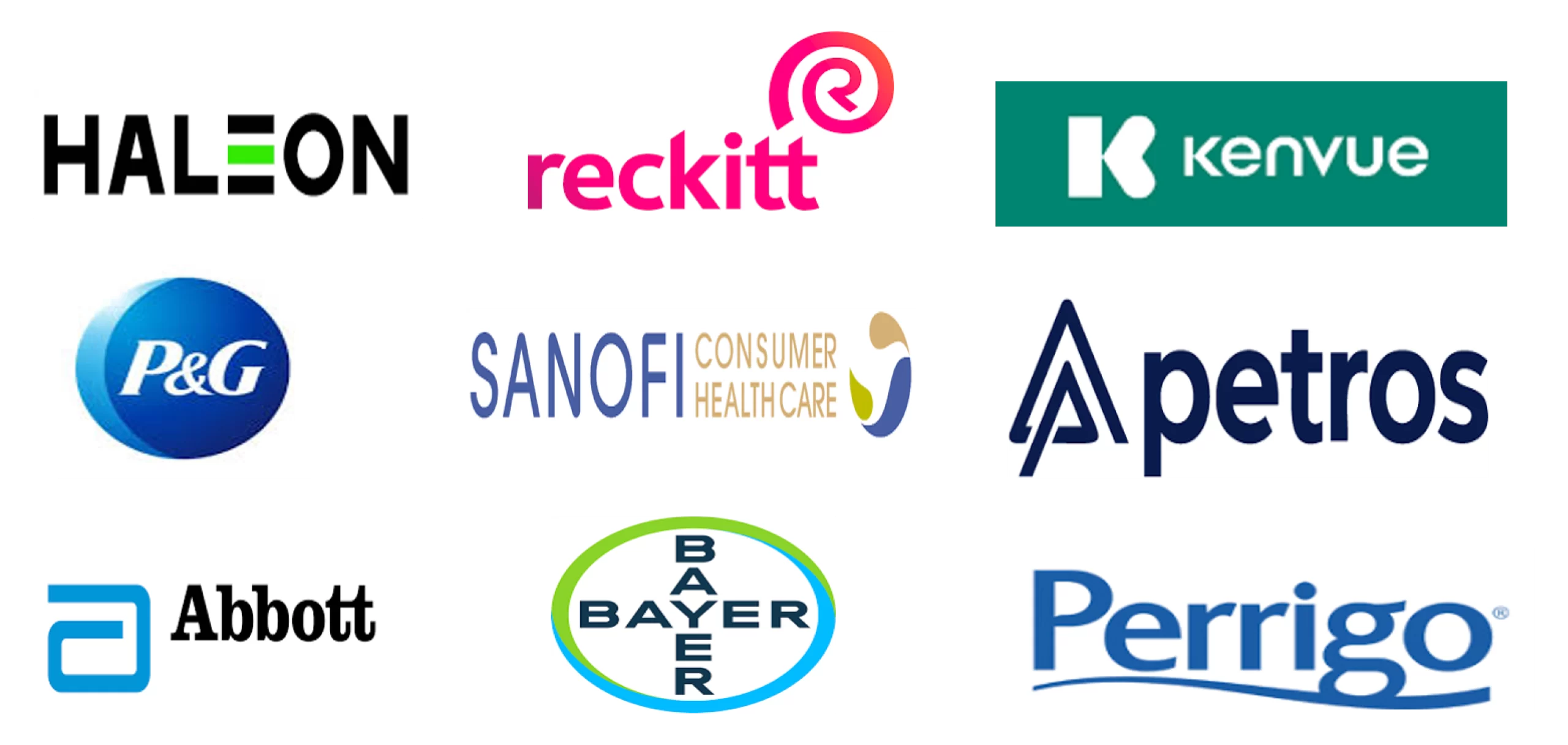Rx to OTC Switch: Overview, Regulatory Requirement and Potential Switch Candidates
Rx-to-OTC switch is the transfer of prescription-based drugs to non-prescription or over-the-counter status. It is a highly regulated and rigorous process that allows consumers to have OTC access to certain medicines with a high safety margin and is effective in treating self-diagnosable conditions. Over-the-counter products are broadly classified into key categories based on their therapeutic use, such as analgesics, respiratory, heartburn, and digestive products, VMS products, eye care, skincare, and lifestyle OTC.
Benefits of OTC Products:
- Improve Patient Autonomy: OTC medicine gives control and decision-making about their health independently
- Low Treatment Costs: OTC drug products are less expensive than prescription drugs, making them affordable options for consumers
- Enhance Patient Education: OTC drug labels contain clear instructions that can help consumers better understand the overall use of medicine
- Time-saving: Patients are not required to visit a hospital for a drug prescription
- Easily Accessible: It can be purchased without a prescription, whereas other Rx drugs require a prescription from an authorized healthcare professional
Impact of OTC Products on the Healthcare System:
- Decentralization: The healthcare system will continue to decentralize and reduce the burden on the healthcare practitioner
- Self-directed: The treatment becomes self-directed by consumers, so it is less time-consuming and has significant cost savings compared to treatment provided by health practitioners
- Rising Role of the Pharmacist: Rx-to-OTC products provide multiple opportunities for pharmacists to promote medication safety and adherence
Approved Rx to OTC Switch
Since 2016, the FDA has approved around 10 Rx to OTC switch products, mainly in analgesics, respiratory drugs, eye care, and contraceptives. Allergic rhinitis, nasal congestion, and arthritic pain are the key indications for which the FDA has approved Rx to OTC switches.
On 13th July 2023, the FDA approved Opill (norgestrel) tablet as the first over-the-counter (OTC) birth control pill.
| Sr. No. | Brand Name | Drug Name | Indications | Dosage Form | Company Name | Rx-to-OTC Switches Date |
| 1. | Opill | Norgestrel | Prevention of pregnancy | Tablet | Perrigo | July 13, 2023 |
| 2. | Narcan | Naloxone hydrochloride | Opioid overdose | Nasal spray | Emergent | March 29, 2023 |
| 3. | Nasonex | Mometasone furoate | Nasal congestion, runny nose, sneezing, Itchy nose | Nasal spray | BioSolutions | March 17, 2022 |
| 4. | Lastacaft | Alcaftadine | Itchy eyes | Ophthalmic solution | Perrigo | December 10, 2021 |
| 5. | Astepro | Azelastine hydrochloride | Nasal congestion, runny nose, sneezing, Itchy nose | Nasal spray | Allergan | June 17, 2021 |
| 6. | Sklice | Ivermectin | Head lice infestation | Lotion | Bayer | October 27, 2020 |
| 7. | Voltaren | Diclofenac sodium | Arthritis pain | Gel | Arbor Pharmaceuticals | February 14, 2020 |
| 8. | Pataday | Olopatadine hydrochloride | Itchy and red eyes | Ophthalmic solution | GSK Consumer (Haleon) | February 14, 2020 |
| 9. | Xyzal Allergy | Levocetirizine dihydrochloride | Allergic rhinitis | Tablets | Alcon | January 31, 2017 |
| 10. | Flonase Sensimist | Fluticasone furoate | Allergic rhinitis | Nasal spray | GSK Consumer (Haleon) | August 02, 2016 |
Table 1: List of Recent Rx-to-OTC Switches Approved by FDA
Regulatory Requirement for Rx to OTC Switch
Rx-to-OTC switch is a highly rigorous and regulated process. Prescription drug products must meet certain criteria to become OTC drugs based on their high safety margin and effectiveness in treating self-diagnosable conditions.
Criteria for OTC Drugs
- Self-Selections: Consumers should be able to select the right medicine based on their symptoms and conditions.
- Self-Diagnostics: Consumers should be able to diagnose conditions or diseases based on symptoms without consultation from doctors.
- Self-Treatable Conditions: The medical condition or diseases should be manageable or treatable by the consumer itself without medical supervision.
- Safety Profiles: The drug should have a proven safety profile with very minimal adverse effects and low potential for drug abuse and misuse.
Rx-to-OTC Switch Pathways
Currently, there are two regulatory pathways for getting approval for OTC drugs, i.e., Rx to OTC switch and Direct to OTC.
A] Rx to OTC Switch: The applications differ based on whether the manufacturer wants to switch to OTC completely or partially.
- Full Switch: A sponsor switches the drug products to non-prescription status in its entirety. To initiate a full switch, a sponsor needs to submit an efficacy supplement to an approved NDA application. After a complete switch, the drug is only available as an OTC drug.
- Partial Switch: In partial switch, a sponsor partially switches the drug for a few indications to non-prescription status while retaining other indications in a prescription status.
B] Direct-to-OTC: This pathway is used for drugs which are previously not approved as a prescription drug and require the submission of an NDA. An NDA has submitted to market a new drug as non-prescription (direct-to-OTC) without receiving approval as a prescription drug.
Clinical Trials & Rx-to-OTC
Clinical trials are not compulsorily required for Rx-to-OTC switches. However, most of the switch applications have new clinical trial data on label comprehension and actual use studies.
- Label Comprehension Studies: To assess consumers’ ability to understand the information on non-prescription drug product labels and their ability to apply this label information while taking medicine.
- Self-selection Studies: To test consumer’s ability to determine if the OTC product is appropriate or correct for themselves based on label information provided on the drug label.
- Actual Use Studies: To assess the safety of a prescription drug under conditions resembling non-prescription use.
Highlights on the Newly Proposed ACNU Rule:
- FDA proposed a new regulatory pathway to improve public health by increasing the over-the-counter availability of drug products for chronic conditions such as hyperlipidemia, diabetes, and hypertension.
- Under the proposal rule, an NDA or ANDA applicant would be required to submit a separate application for the approval of a non-prescription drug product with an ACNU.
- ACNU could be a requirement that the consumer take a self-selection test on a mobile app before purchasing a drug product to determine if the drug is “appropriate” for use by them.
Potential Rx to OTC Switch Candidates
Multiple consumer healthcare companies are working to get their prescription drug products OTC status. We have profiled the Rx to OTC switch-related activities on potential candidates who could get OTC status.
- Cialis: Sanofi is working to get an Rx-to-OTC switch for Cialis® (tadalafil). The company also planned an Actual Use Trial (AUT) to support the Rx-to-OTC switch for Cialis® (tadalafil) to treat erectile dysfunction (ED).
- Viagra: Pfizer Consumer Healthcare launches the world’s first non-prescription Viagra Connect® brand for erectile dysfunction in the UK. Viagra Connect® brand has US switch potential.
- Stendra: Petros Pharma is using AI as an ACNU option to complete the OTC requirement for the switch of Stendra to treat erectile dysfunction
- Lipitor: Pfizer is pushing forward with efforts to get OTC status for its drug Lipitor to patients without a doctor’s prescription.
- Dymista: The FDA has previously approved Nasonex, Astepro, and Flonase for treating allergic rhinitis and nasal congestion, so Dymista is in the same category and has the potential to undergo the Rx-to-OTC switch.
| Drug Name | Active Ingredients | Company Name | Indications |
| Dymista | Azelastine Fluticasone | Viatris | Allergic rhinitis and rhino conjunctivitis |
| Viagra | Sildenafil | Viatris | Erectile dysfunction |
| Cialis | Tadalafil | Sanofi | Erectile dysfunction |
| Stendra | Avanafil | Petros Pharmaceuticals | Erectile dysfunction |
| Lipitor | Atorvastatin | Viatris | Cholesterol lowering drug |
Table 2: Potential Rx-to-OTC Switches Candidates
Key Players in Rx to OTC Switch
In 2022, the demerger of GSK consumers from the parent GSK group led to the formation of Haleon as a separate consumer healthcare company with key product portfolios such as Sensodyne, Panadol, Advil, Centrum, etc. Johnson & Johnson’s spinoff from Kenvue is the world’s largest consumer healthcare company by revenue, with well-known brands such as Benadryl, Combantrin, Zyrtec, and Tylenol. Kenvue and Haleon are the top consumer healthcare companies, followed by Sanofi, Bayer, and Reckitt Benckiser.

Key Players in Rx to OTC Switch Domain
Conclusion
Rx to OTC switch is a complex, rigorous, data-driven, and highly regulated process. OTC switches provide easy access to drugs and allow the consumer to self-treatment symptoms without seeing a prescription from doctors. Switching from Rx medication to OTC products can significantly contribute to the sales growth of medications, so multiple companies are working on converting their prescription products into OTC products through the Rx-to-OTC switch pathway. Opill, Nasonex, Flonase, Voltaren, and Astepro have been successful Rx-to-OTC switch products by the FDA in the last decades.
Currently, multiple consumer healthcare companies are working to get OTC status for their prescription drug products. Cialis® (tadalafil), Viagra (sildenafil), Stendra (Avanafil), Lipitor (Atorvastatin), and Dymista (azelastine and fluticasone) are potential Rx to OTC switch candidates that could get OTC status in the near future. However, in future research, pharma and consumer companies may use artificial intelligence (AI) under the newly proposed ACNU rule by the FDA to complete OTC requirements for OTC switches related to medicine used in chronic conditions.



